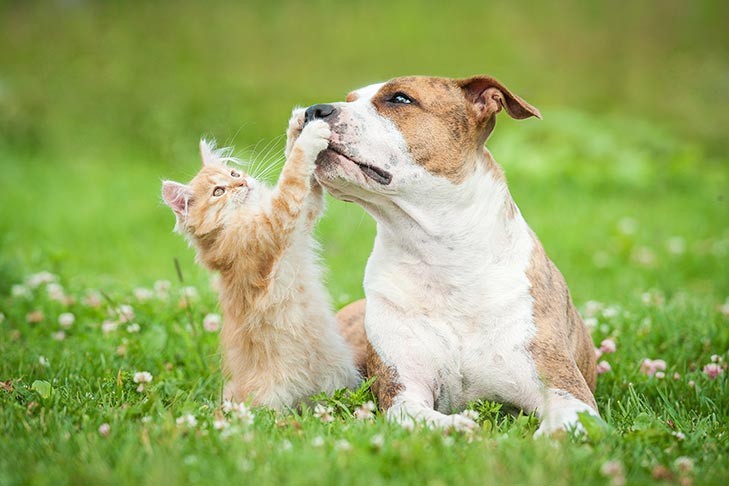It’s a scene familiar to many pet owners: you catch your dog sneaking a snack from the cat’s litter box. The question inevitably arises, often accompanied by a wince of disgust, “Why Do Dogs Eat Cat Turds?” While it might seem repulsive to us, this behavior is rooted in natural canine instincts. Let’s delve into the science behind this common, albeit unpleasant, habit.
The Science Behind the Sniff and Snack: Why Cat Turds Are Appealing
Dogs are inherently scavengers. This primal instinct, developed over millennia, drives them to explore and consume a wide variety of substances, many of which we might find unappetizing. From discarded food scraps to items found on the sidewalk, a dog’s world is full of potential “treats.” Cat poop, unfortunately, often falls into this category.
One of the primary reasons cat turds are so attractive to dogs is their potent smell, which, to a canine nose, is akin to a gourmet meal. This strong odor largely stems from undigested ingredients in cat food, which is typically high in protein and fat – elements highly appealing to a dog’s palate. In fact, many dogs are also drawn to cat food itself, further explaining the allure of its byproduct.
This tendency to eat feces is scientifically known as coprophagia. While coprophagia can sometimes indicate a nutritional deficiency, in most cases, especially when it comes to cat poop, it’s simply a manifestation of a dog’s exploratory nature and scavenging instincts. It can become a learned behavior, reinforcing itself each time the dog finds this “snack” rewarding. Interestingly, maternal canine behavior also includes coprophagia, as mother dogs will consume their puppies’ feces to keep the den clean and protect them from predators – a behavior that highlights the natural aspect of fecal consumption in canines. Furthermore, the digestive enzymes and partially digested nutrients present in cat feces can be surprisingly enticing to a dog’s olfactory senses and taste preferences.
 American Staffordshire Terrier lying outdoors next to a kitten that is playing with the dog
American Staffordshire Terrier lying outdoors next to a kitten that is playing with the dog
Is Eating Cat Turds Harmful? Potential Health Risks
While the act of eating cat poop might be natural for dogs, it doesn’t mean it’s without risks. Consuming feces, including cat turds, exposes dogs to potential health hazards. One significant concern is the transmission of harmful bacteria and parasites. Cat poop can harbor bacteria like salmonella and E. coli, which can cause gastrointestinal upset in dogs and, in some cases, even be transmitted to humans.
Furthermore, dogs can contract various internal parasites from ingesting cat feces. These parasites can range from roundworms and hookworms to giardia and coccidia. It’s important to remember that even if your cat appears healthy and shows no symptoms of parasitic infection, they can still be carrying and shedding parasite eggs in their feces.
Cat litter itself also presents a risk, particularly clumping litter. If ingested in large quantities, cat litter can cause intestinal blockages in dogs. While a small amount of litter consumption might pass without incident, larger amounts can solidify in the digestive tract, leading to constipation or, more seriously, bowel obstruction. Signs to watch for include difficulty defecating, absence of bowel movements, vomiting, lethargy, and abdominal pain. If you observe these symptoms after your dog has ingested cat litter, immediate veterinary attention is crucial.
Despite these potential risks, it’s worth noting that many dogs who occasionally eat cat poop experience no adverse health effects. However, the potential for health problems and the unpleasant nature of the habit itself make it a behavior that owners should actively discourage.
Breaking the Habit: How to Stop Your Dog from Eating Cat Turds
Fortunately, there are several effective strategies to prevent your dog from indulging in this unsavory snack. Veterinarians often recommend the simplest solution: restricting access to the litter box. Placing the litter box in an area inaccessible to your dog, such as a room secured by a baby gate or a high shelf, is often the most effective deterrent. Dog gates are particularly useful as they allow cats to pass freely while keeping dogs out, creating a safe and private space for your feline friend.
If physical separation isn’t feasible, consider investing in litter box designs that are dog-proof. Covered litter boxes with enclosed tops significantly limit access for dogs. Top-entry litter boxes, which require cats to jump into the box from above, are also highly effective at deterring dogs.
For outdoor scavenging, where neighborhood cats might be the source, prevention becomes more challenging. Using cat repellents in your yard can discourage cats from entering your property and defecating there. Regular yard clean-up to remove any discovered feces is also important. In cases of persistent outdoor coprophagia, regular veterinary check-ups are essential to monitor your dog for any signs of parasitic infection.
Beyond environmental modifications, training can also play a crucial role. Teaching your dog a strong “leave it” command can be invaluable in redirecting their attention away from cat poop, both indoors and outdoors. Positive reinforcement techniques, rewarding your dog for ignoring or moving away from the litter box or feces, can help solidify this desired behavior.
Conclusion
While discovering your dog eating cat turds is undoubtedly unpleasant, understanding the natural scavenging instincts behind this behavior can offer some perspective. Although often a harmless, albeit disgusting, habit, coprophagia does carry potential health risks for your dog. By implementing preventative measures such as litter box placement, dog-proof litter solutions, and consistent training, you can effectively break this habit and protect your dog’s health and your own peace of mind. If you have concerns about your dog’s coprophagia or their health, consulting with your veterinarian is always recommended for personalized advice and guidance.
